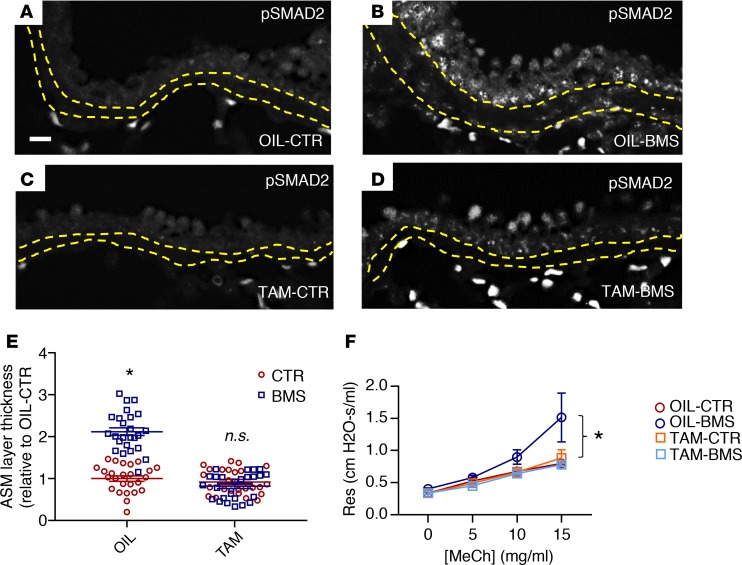Figure 6. Deletion of TGF-β receptor 2 (Tgfbr2) in mouse smooth muscle in vivo prevents the increase in Col1a2 expression, ASM layer thickness, and airway responsiveness induced by BMS.
Myh11-CreERT2;Tgfbr2fl/fl transgenic mice were injected with tamoxifen to delete TGF-β receptor 2 (Tgfbr2) in the smooth muscle and then given 5 days of CTR or BMS diet (TAM-CTR, TAM-BMS). Corn oil–injected littermates with the same genotype with 5 days of CTR and BMS were used as control (OIL-CTR, OIL-BMS). (A–D) Immunostaining of phospho-SMAD2 (p-SMAD2) showing signals within the ASM layer of OIL-BMS (B) but not in OIL-CTR (A) airways, similar to what is observed in CTR and BMS airways in WT mice. Scale bar: 20 μm. Deletion of Tgfbr2 in smooth muscle eliminates p-SMAD2 signals in TAM-CTR (C) and TAM-BMS (D) airways (n = 3 per group). Yellow lines delineate the margin of the ASM layer. (E) Morphometric analysis showing a thicker ASM layer in OIL-BMS airways compared with OIL-CTR airways. There was no significant difference in the thickness of the ASM layer among OIL-CTR, TAM-CTR, and TAM-BMS airways (n = 3 mice per group; 8–9 airways per mouse). (F) Airway resistance (Res) is higher in the OIL-BMS group at baseline and with methacholine (MeCh) challenge compared with OIL-CTR, TAM-CTR, and TAM-BMS. There is no significant difference in airway responsiveness between OIL-CTR, TAM-CTR, and TAM-BMS mice (n = 6 per group). Data represent the mean ± SEM (E) or mean ± range (F). Two-way ANOVA was used for statistical analysis. Bonferroni’s correction for multiple comparisons was applied to adjust P values. *P < 0.05, n.s., P ≥ 0.05.

